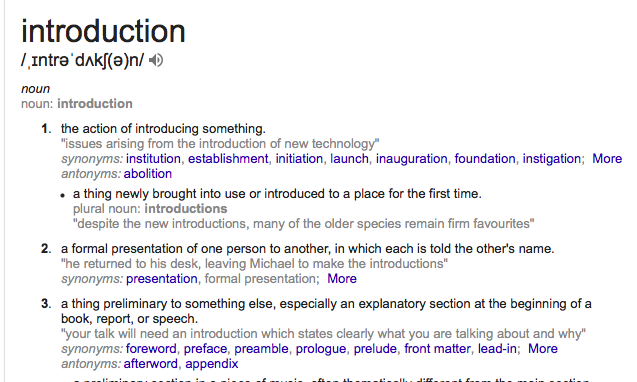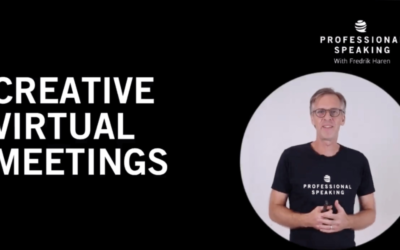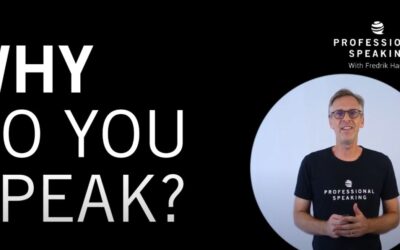
Here is an introduction that a speaker submitted to a client to be read before the speaker went up on stage.
Can you see what is wrong with it?
(I have changed some of the facts to protect the identity of the speaker)
Introduction:
Location: Sheraton, London
Introduction of Mr Speaker by Mr Smith, Senior Partner, Law firm X.
“Mr Speaker is the CEO of the General Inspiration Inc and author of the book “Value Driven Leadership”.
For the past 3 decades Mr Speaker has worked with helping companies develop successful value driven leadership practices.
When he first began his professional career back in 1980, he worked for two multi-national IT computer firms, first HP, then IBM.
In 2000 he had a breakthrough moment of conscious realization. Being “comfortably miserable” in his job, in other words, he was making a good salary, but didn’t love what he was doing, Mr Speaker decided a big change was needed. Gathering all his courage, he stepped off the mothership of multi-national financial security, and left the IT Industry. On his journey of self-discovery he found his calling in life, transitioning into a deeply satisfying career as a professional facilitator.
Instead of working with bits and bytes, he now works with values and behaviours, making a difference as a global speaker and thought leader on leadership. His passion is inspiring leaders to reach their full potential building values-driven organizations.
3 years ago Mr speaker took another courageous step in life and moved from Stockholm to London at the request of his old mother, to become an in-person, as opposed to a skype son, to his mother. Needless to say, we can tell family and adventure are values which mean a great deal to him.”
So what is wrong with this introduction?
Well, all of it …
(Ok, not all of it, but a lot of it)
Why?
Because an introduction is not supposed to be an introduction to the SPEAKER, but an introduction to THE SPEECH.
And yes, an introduction should help to build credibility for the speaker so that the audience better understands why they should listen to the speaker, but much more important is the fact that the introduction explains to the audience why the organisers decided to include the upcoming topic at this conference.
That the speaker was miserable in his previous corporate jobs but happy now, risk alienating the audience which is full of people still in corporate life.
That his new career as a facilitator is “deeply satisfying” should be shown, not told. Samt with the fact that his “passion is inspiring leaders”.
The fact that the speaker has moved to take care of his old mother, is cute but has nothing to do with the speech.
Here is how I suggested rewriting it:
“Our next session is on “Value Driven Leadership”, something that is very important for us here at Law firm X, and something that we need to constantly be reminded of, especially after the latest developments in our industry..
We are very happy to have Mr Speaker here to share his views about this topic as he literally wrote the book on the topic.
Mr Speaker is the CEO of the General Inspiration Inc and author of the book “Value Driven Leadership”.
For the past 3 decades Mr Speaker has worked with helping companies develop successful value driven leadership practices.
He will share with us what value driven leadership is, how it can be used to drive reliable growth and which companies are doing it right – and what we can learn from them.
Let’s give him a warm welcome.”
Now the introduction is about the session, while still building credibility for the speaker. And it also builds credibility towards the organiser, by showing that the topic is important for the organiser, ie important for the conference the attendees are attending.
The last sentence about giving the speaker a warm welcome is a subtle but effective way of getting the speaker off to a good start since a warm welcome (even if it is “fabricated” creates a positive affinity towards the speaker.)
So remember, the next time the organisera ask you how they should introduce you reply: “I don’t want you to introduce me, I want you to introduce my speech, and I want you do do that by explaining to the audience what the speech is about, why you selected my to speak on it and why the topic of the speech is important to the audience.”




